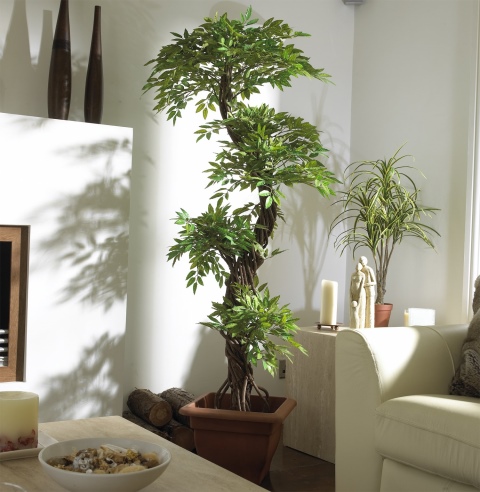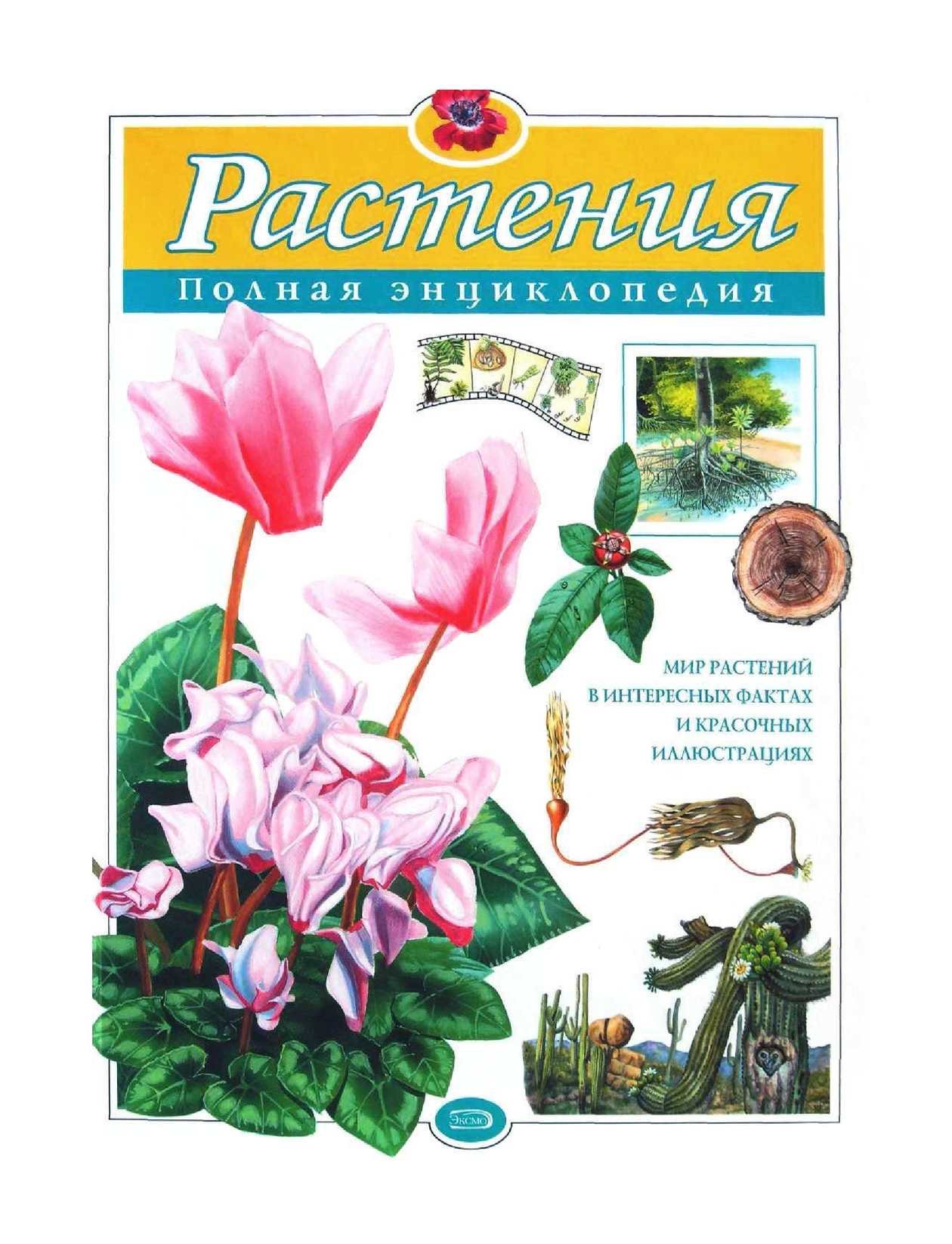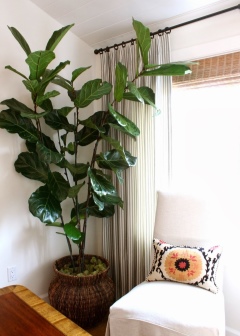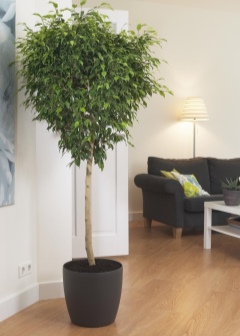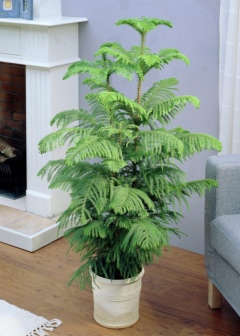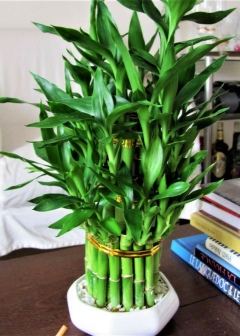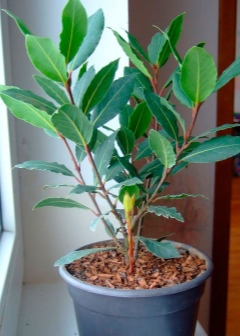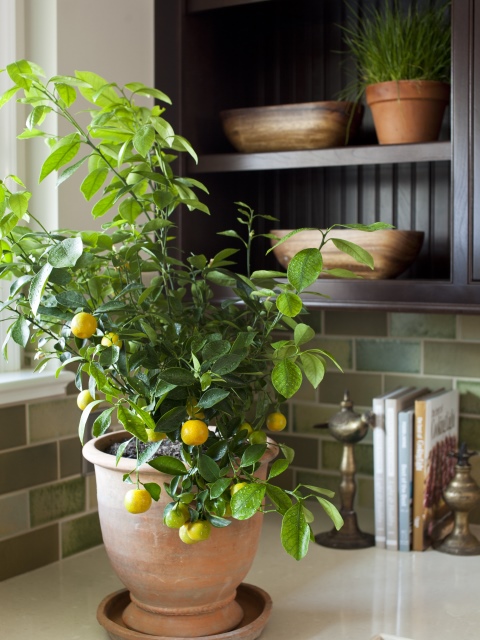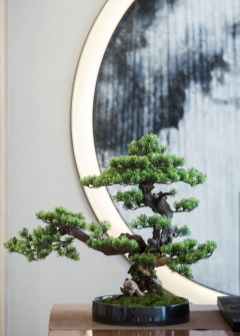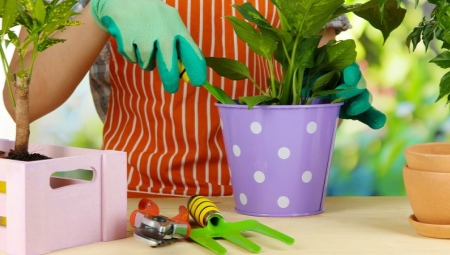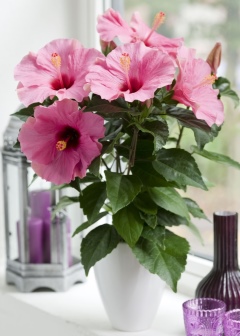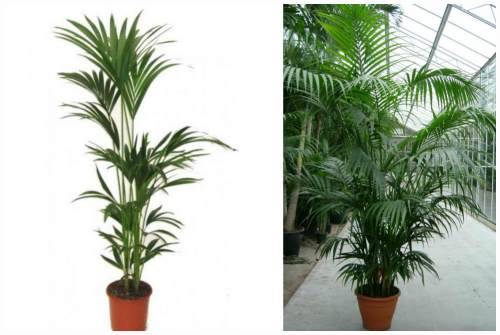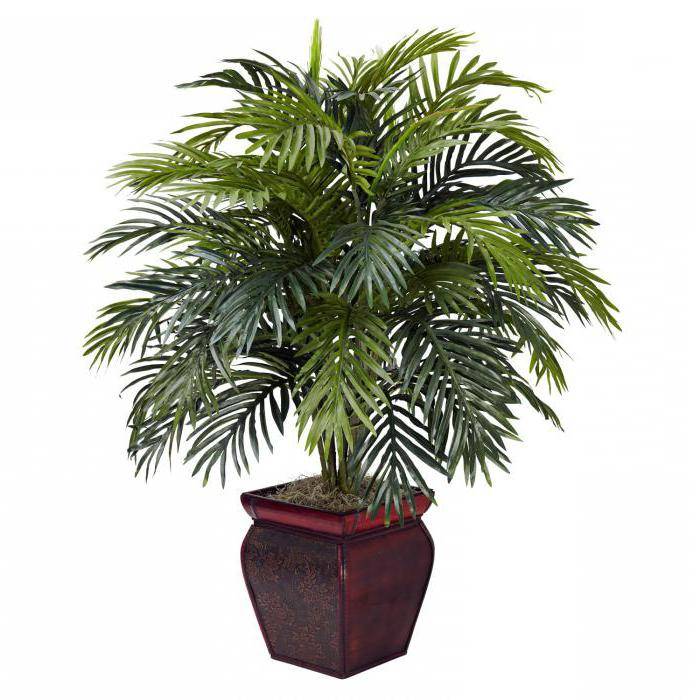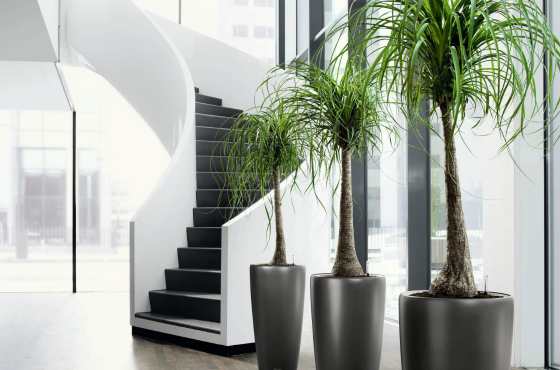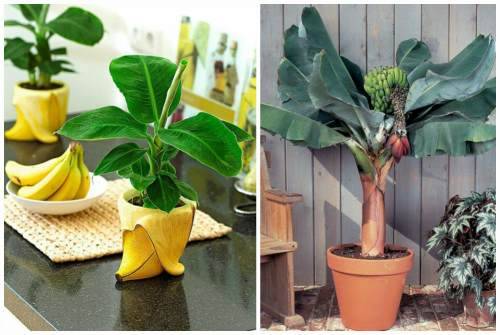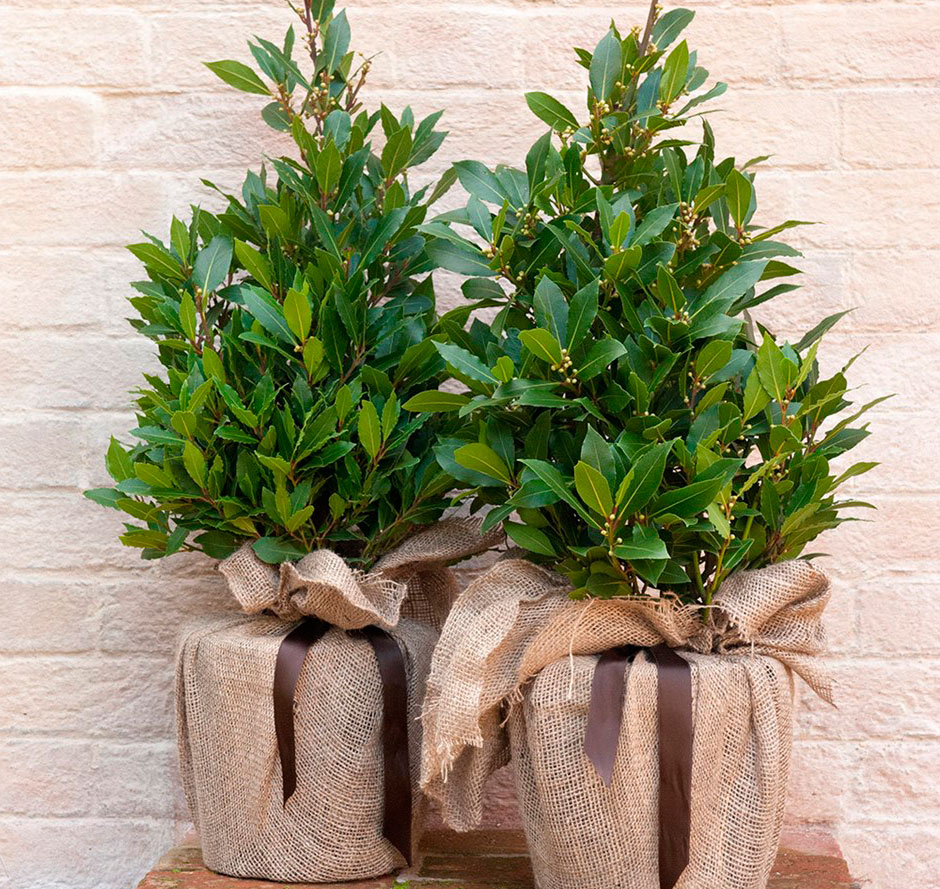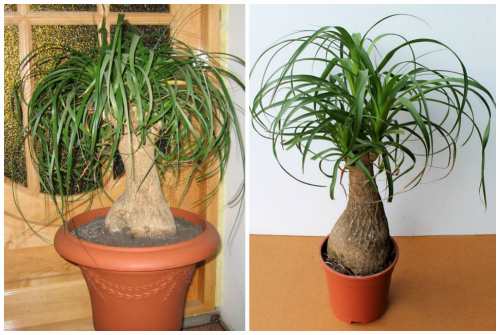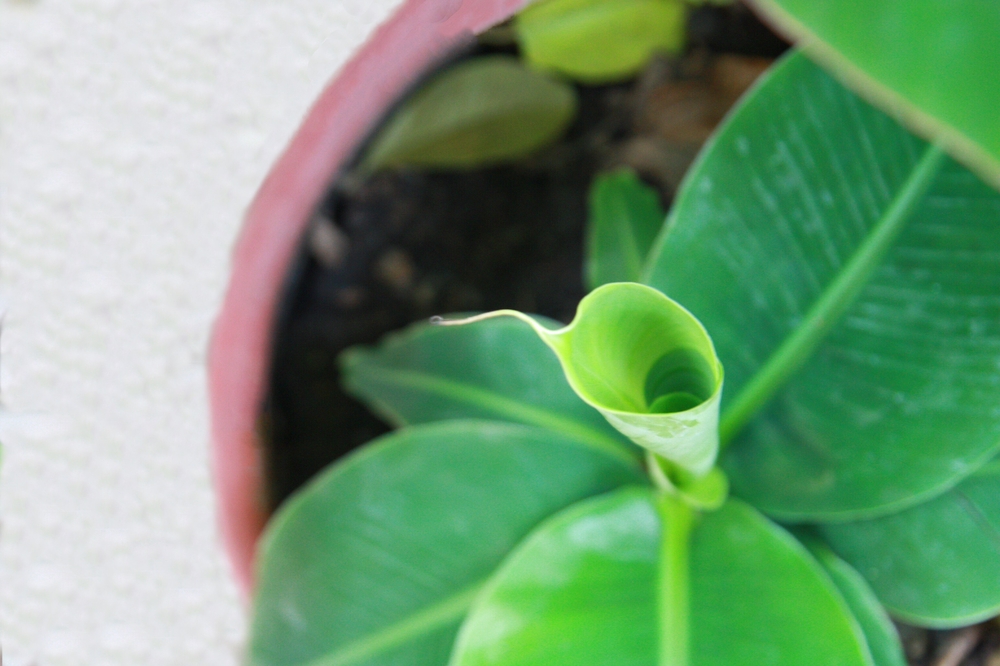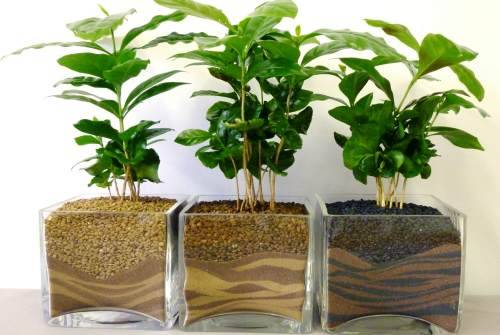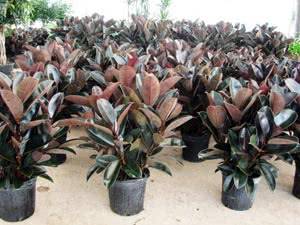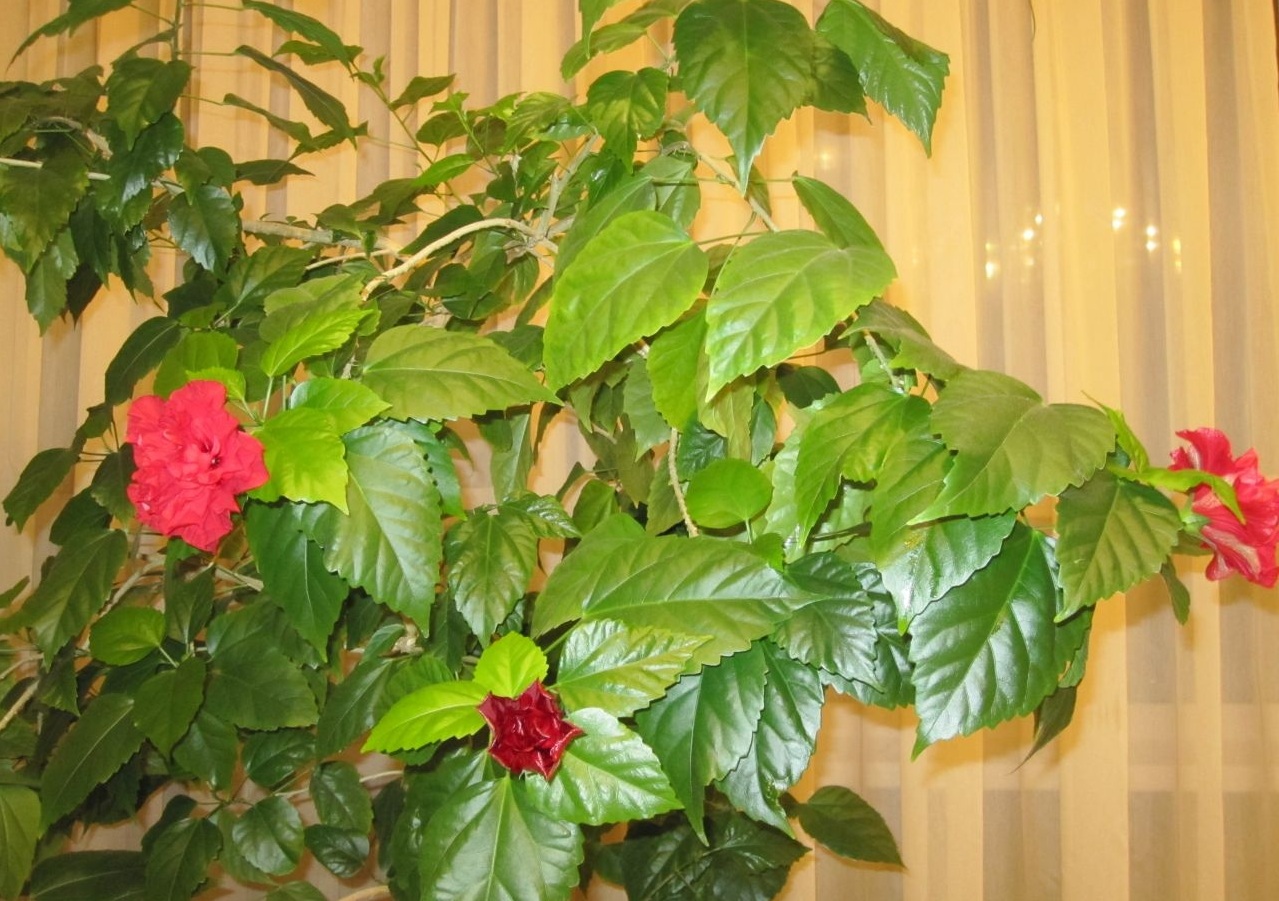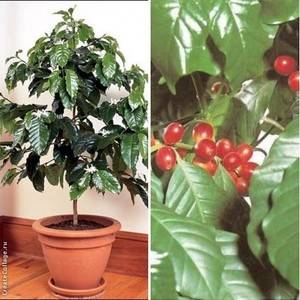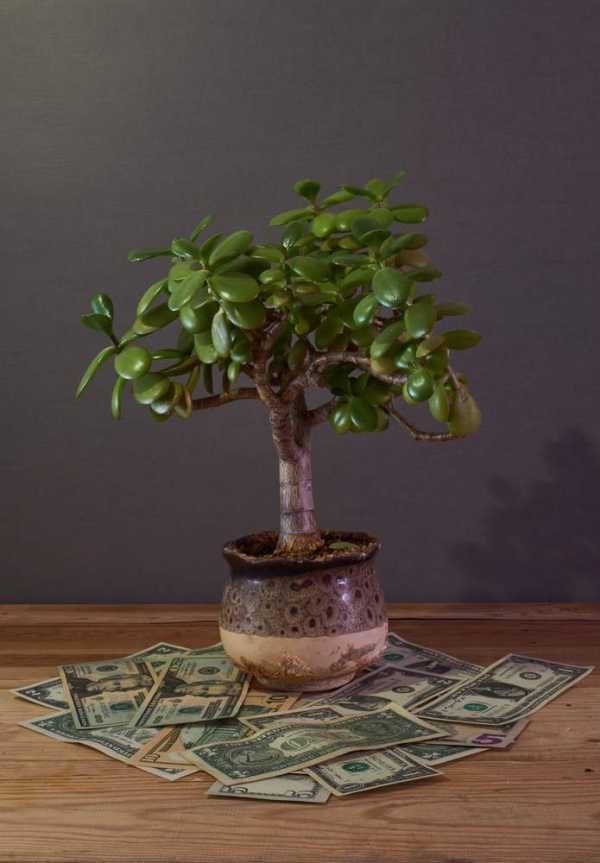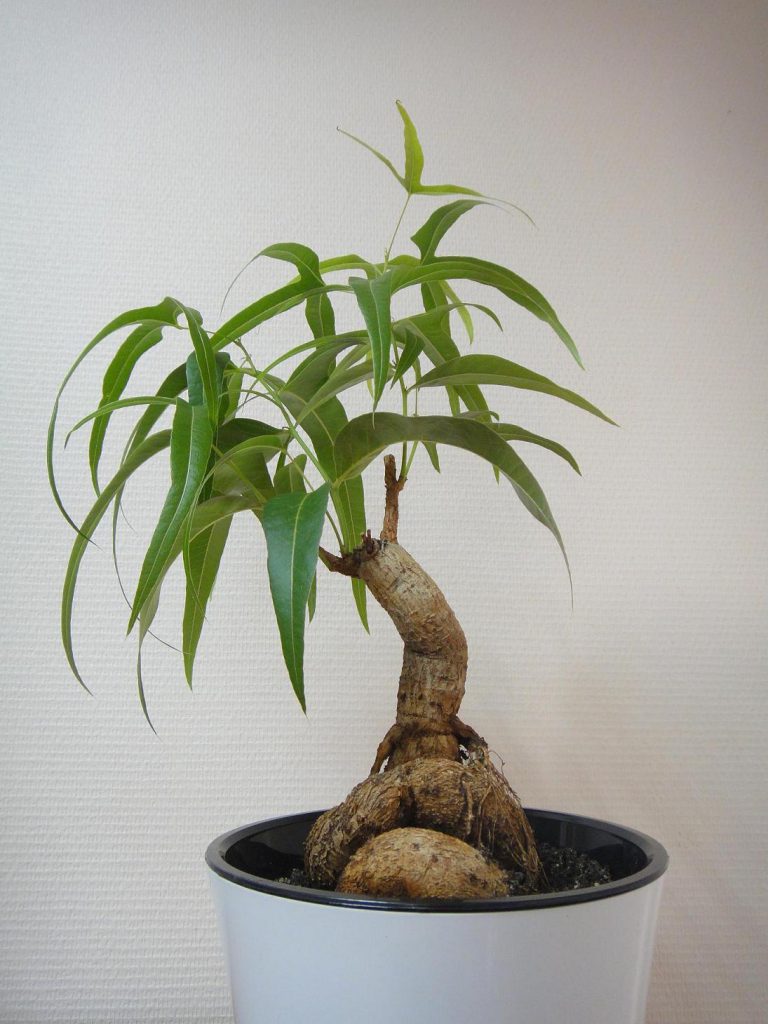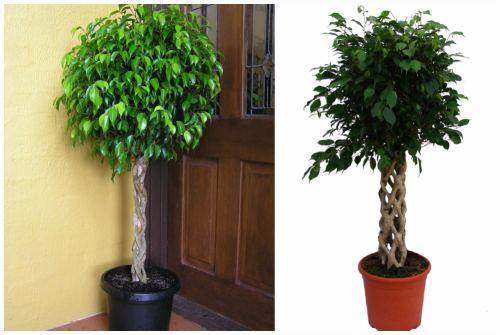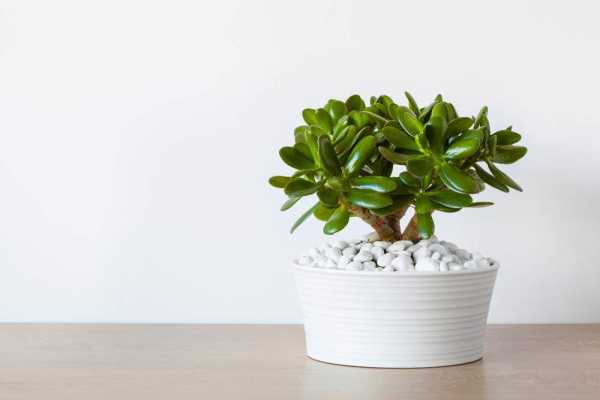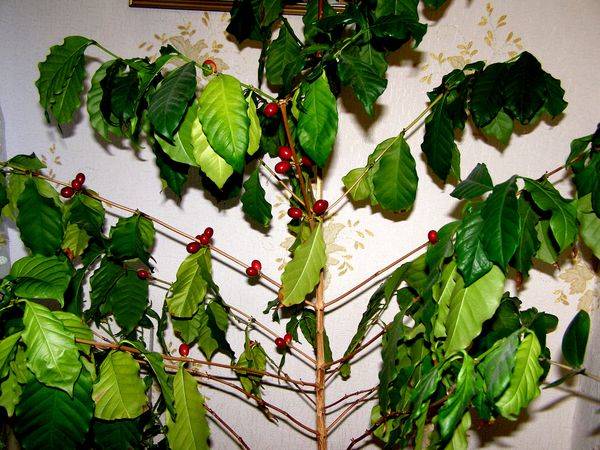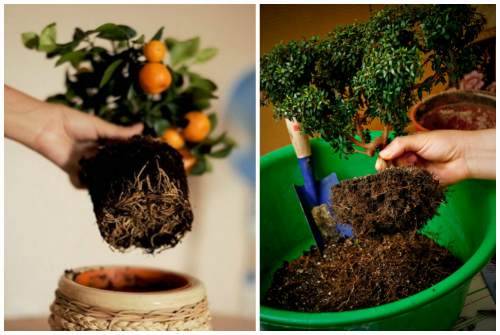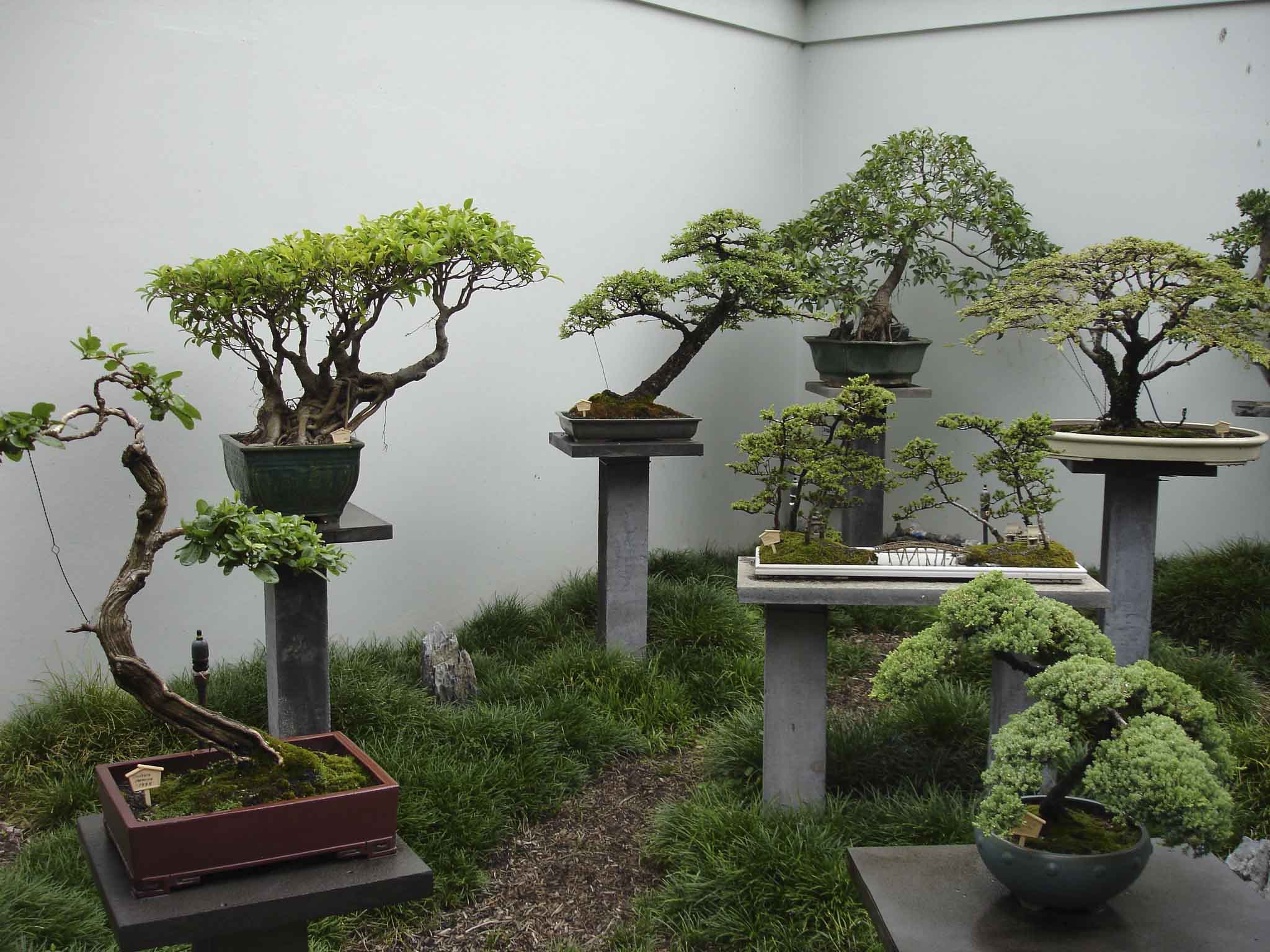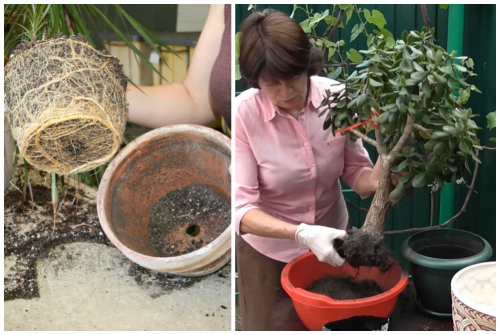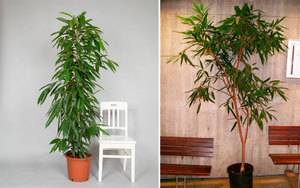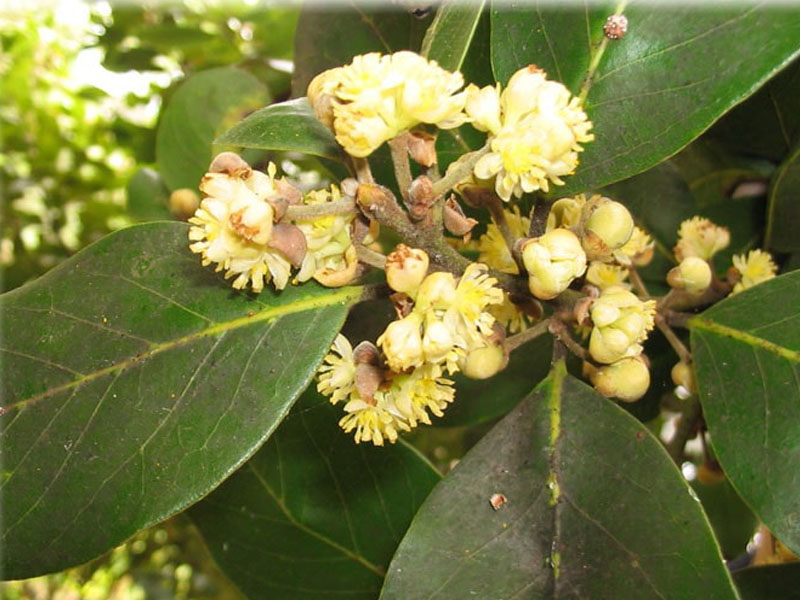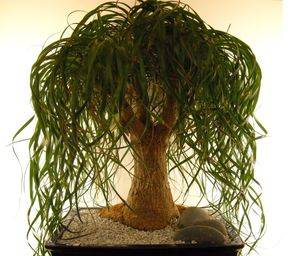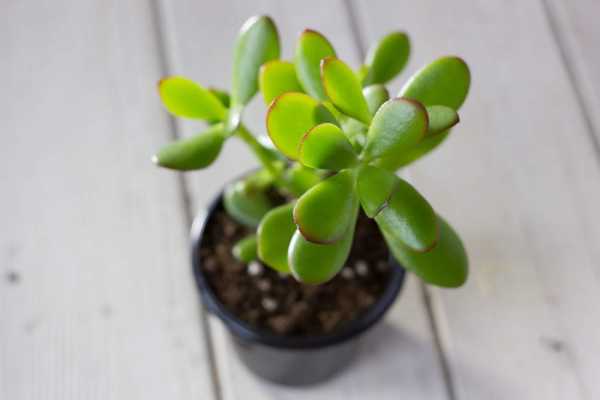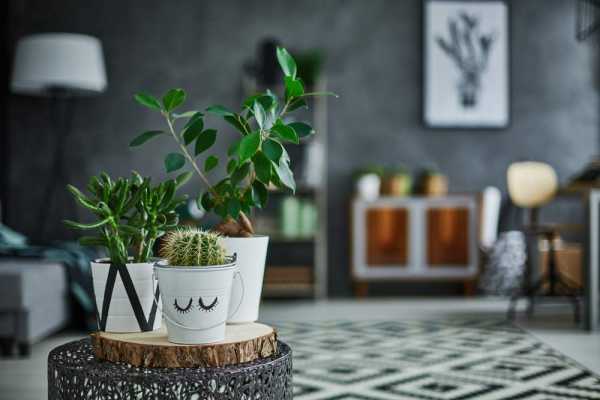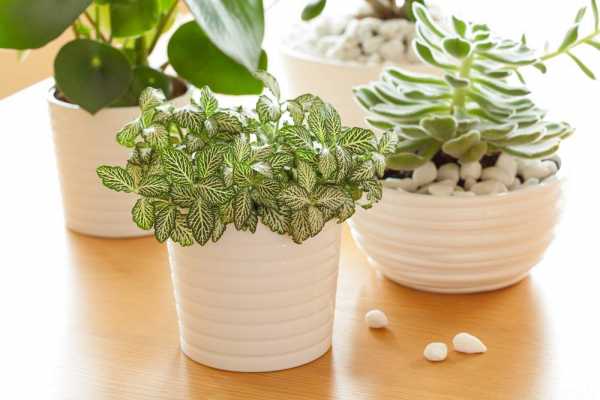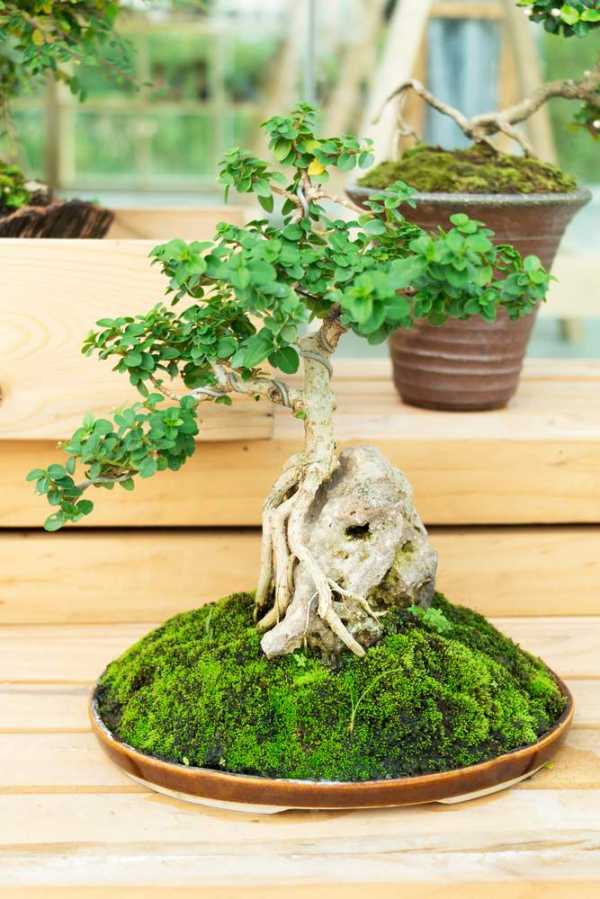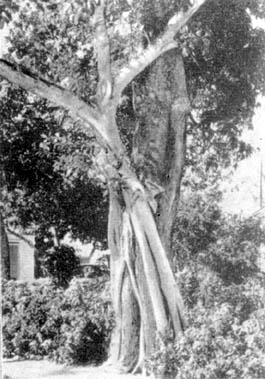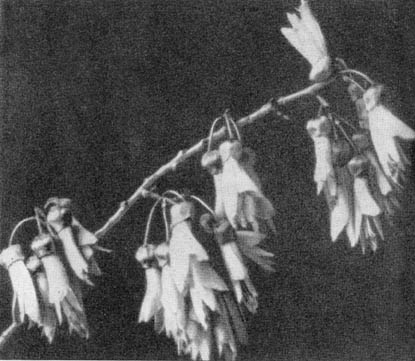Tree in religion
Since ancient times, the tree has symbolized life. And in many primitive religions it was an object of worship. For example, the ancient Greeks believed that a nymph - a dryad is associated with each tree. Mention of the tree is also found in many modern religions, Christianity mentions the Tree of the Knowledge of Good and Evil, the Tree of Life.
Palm Sunday, or the Feast of the Lord's Entry into Jerusalem, is celebrated with a festive service, to which believers come with palm branches. In Russia, the willow (willow family) is the first to bloom, so the branches of this tree began to be used and the holiday was called Palm Sunday.
What a Flaming Tree looks like
Although Delonix Royal is not high (the height of an adult plant is from 15 to 20 meters), it is wide, and the older the plant, the thicker the trunk. The Red Flame grows very quickly - it grows by three meters per year. Therefore, a young tree is distinguished from an old tree primarily by its bark (at first it is smooth and light, and over time it becomes brown with gray spots) and by flowering - the older the tree, the more intensely it blooms.
Delonix is a very stable and hardy tree, since it has very developed roots that go deep into the ground and thereby help it withstand the strongest storms. This plant adapts very well to different types of soil and climatic conditions.
Despite the fact that the Fire Tree is a tropical plant, it tolerates drought well - it only completely sheds its leaves at this time (this helps the plant save moisture), in other regions the leaves fall off partially, which is why it is considered an evergreen. But frosts - this plant does not tolerate and is able to withstand temperatures not lower than -1 ° C.
The branches of the Red Flame are arranged so that they give the tree the shape of an umbrella. On them there is a huge number of branches with large, fern-like green leaves 30 to 50 cm long.The leaf itself has a complex structure, since it consists of 20-40 pairs of smaller leaves, each of which is also divided into 10-20 pairs of leaves oval (interesting fact: these sheets are folded at night).
While the four petals of red or yellow color (depending on the species) almost do not differ from each other, the fifth one is wider, rounded, with small white or yellowish lines, performs an important function - it attracts insects for cross-pollination.
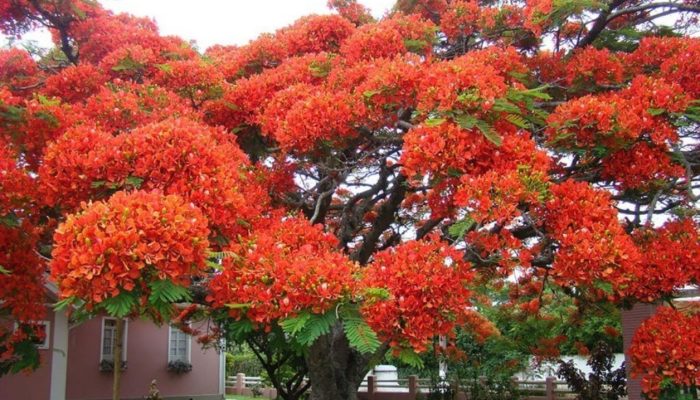
In the center of the calyx grow long, slightly curved stamens of red-orange color, thanks to which the Flaming Tree got its scientific name: "onyx" is translated from Greek as "claw".
It is no coincidence that the royal delonix belongs to the legume family: during the flowering period, small green flat pods appear on it - the fruits of the fire tree. They grow very quickly, and as they grow, they change their color - first they are woody, then brown, and when ripe, they become black. The length of one such pod may well reach 60 cm, width - 5 cm.
The inner part of the pod has two parallel chambers, each of which contains hard shiny oblong-shaped seeds about 2 cm long and weighing 0.4 g. When wet weather sets in, the pods spontaneously open - and from them 20 to 30 seeds are released, some of which falls to the ground, part of it remains on the seeds.
Sanzen-ji Temple, Ohara
Tofuku-ji Temple is one of the best places to see autumn leaf fall in Kyoto. It is a large Zen Buddhist temple with beautiful Japanese-style gardens. You can even find several bridges.For those who have never seen the rock garden, we warmly recommend admiring it in the Tofuku-ji temple.
Shisen-do Temple is also officially known as Jёzan-ji. During the Edo period, it served as the seat of a samurai named Jёzan Ishikawa (1583–1672). It was he who created the entire temple garden, which, believe it or not, is considered a true work of Japanese art. Of course, in such a garden it is extremely pleasant to enjoy the beauty of autumn leaf fall!
To see the autumn leaves in the evening, visit the Nanzen-ji Temple. Maple trees are illuminated by night lights; this makes the temple grounds a very suitable place to rest here after a long and exhausting day. You do not have to pay to enter the main building of Nanzen-ji Temple, but there is a small fee to enter the subordinate buildings.
The best time to discover the autumn colors of Kitano Temmangu Shrine is late November or early December. More than 250 Japanese maples grow here. The temple is open to the public, and the abbots allow guests to enter the maple grove. Try to walk along the meandering paths of the grove with your friends, because it is much more interesting than walking alone!
If you come here at the end of November, you can enjoy the play of maple leaves in the wind. Many Zen Buddhist temples in Tokyo have their own maple grove, and the Edo-ji Shrine is no exception. However, not many foreign tourists know about this place, although here you can dip your eyes into the autumn beauty of the colorful maples that grow here and there on its territory.
Ohara is a small village located in the northern part of Kyoto. Here you will find Japanese-style gardens, temple buildings, a moss garden, cedar and maple groves, walking paths, ponds, a statue of Amida Buddha, rows of miniature figures of the goddess Kannon, restaurants and shops. In a word, everything here is built for your pleasure, and you only have to choose what to eat, what to buy and where to go first! If you don't want to miss out on all the beauty of Kyoto's autumn nature, we recommend arriving before mid-November.
This beautiful temple called Eikan-do (formerly known as Zenrin-ji) is located north of the large Nanzen-ji temple complex. It is considered by many to be one of the most scenic and popular places for admiring autumn leaves in Kyoto, which, however, is worth visiting at any other time of the year.
This temple boasts a rich history and several buildings, a garden with a pond, and the Tahoto Pagoda. The main building of the Eikan-do temple complex deserves special attention. By the way, this temple belongs to the Jodo sect of Japanese Buddhism. Try walking the paths admiring the maple leaves and manicured gardens.
So you've discovered ten of the most popular autumn leaf viewing spots in Kyoto. Now is the time to explore them in real life! Be sure to book the Kyoto Fall Tour; we wish you the most vivid experience of this trip.
visa to Japan for Ukraine, Kazakhstan and Belarus | excursions in Japan | tours to Japan
Description
Rose of Leonardo da Vinci belongs to the Floribunda group. The variety was obtained by crossing polyanthus and hybrid tea roses. The Floribunda group includes precisely spray roses of various varieties, but the most popular is still da Vinci. Created in 1994 by Alain Mayland and named after the artist.
The flower blooms with double flowers with a diameter of about 10 cm and a bright color. Flowers can be either single, or grow in clusters of 3-4 pieces. One flower contains about 80 petals. Roses have a light fruity aroma. Gardeners also love the bright red flower cultivar. the Rose edited by Leonardo da Vinci has about 100 red petals.
The bush itself in the variety is strong and reaches 70-100 cm in height, and the red rose can grow even more. The foliage is dark green and the shoots are erect.In addition, the variety is highly resistant to various diseases.
The bush is straight, growing upward, very dense, of medium height, which can be from 70 to 110 cm. All flowers are large, double-sided, with a large number of large, closely spaced petals. Their size is up to 10 cm, but against the background of a medium-sized shrub, they sometimes seem simply huge. Flowering is brush-like, abundant, continuous, in one brush you can count from five to six flowers.

Rose of Leonardo is photophilous, but she is not afraid of rains: she can endure even showers without losing the pristine freshness of the buds. Hardy, blooms in some areas before frost. The color of the petals is persistent, not subject to fading in the sun, and as for pests and diseases - with proper care and timely preventive measures, this trouble can be avoided.
It is also worth noting that Leonardo da Vinci took over her amazing beauty from hybrid tea representatives, and her resistance to cold weather, diseases and unpretentiousness were passed on to her from polyanthus roses.
Black currant
This deciduous shrub can be found in almost every part of Europe and in the northern regions of Asia. It actively grows both in the southern latitudes of the temperate climatic zone and in Siberia and the Far East.
The berry is characterized by rapid fruit ripening. Blossoming of black currants begins in May-June (depending on the region), and the fruits are ready for consumption in about 1.5 months.
In the gardening of the northern regions, specially bred varieties are used, intended for cultivation in this area. These include "Leningrad Giant", "Seedling of Sophia" and "Secret".
Popular types
In nature, there are about 20 species of monkey trees, but only single, most compact specimens are used in indoor cultivation.
Araucaria is variegated. An unpretentious plant with a height of only 50-65 cm. On an erect, also covered with needles trunk, horizontal long branches are located. All vegetation is colored bright green. On each branch there are several more gradually shortening lateral processes. On a young tree, shoots are densely covered with needle-like bright green needles. They are 1-2 cm long and 1 mm wide. Over the years, the needles become triangular, similar to adjacent green scales. The scales are 8-10 mm long and 2-4 mm wide.
 Araucaria varifolia
Araucaria varifolia
Brazilian monkey tree (narrow-leaved araucaria). A taller plant that can also be grown at home. Its height can reach 3-4 m. It grows in the south of Brazil. There are several whorled branches at the top of the long stem. In appearance, the tree resembles a palm tree. The entire crown is grouped at the top in the shape of an umbrella. Lanceolate dark green scales terminate in a sharp thorn. The length of the needles is 3-6 cm, with a width of 5 mm. The needles are much thicker on fertile branches. The trees are dioecious, leathery cones reach 20 cm in diameter.
 Brazilian monkey tree
Brazilian monkey tree
Chilean araucaria. The plant is a tall (up to 60 m), erect tree. This alpine monkey tree is adapted to cold snaps and can withstand short-term frosts down to -20 ° C. The bark of even an adult plant is green. The surface of the stem is covered with many scars from fallen branches. Coniferous scales in the form of a concave triangle 3-4 cm long and 1-3 cm wide are distributed in a spiral. Each leaf can be on a branch for up to 15 years.
 Chilean araucaria
Chilean araucaria
The Hanstein monkey tree is increasingly found in culture today. These little potted Christmas trees are very popular. The native land of this species is New Guinea, where it can grow up to 90 m in height. The top of an even trunk is dotted with whorls of branches. Coniferous scales or small needles are 6-12 cm long and 1.5-2 cm wide.They have a wider base and a sharpened edge. Monoecious plants bear male flowers on thinner branches, and oval cones up to 25 cm in diameter are located on thickened shoots.
 Hanstein's monkey tree
Hanstein's monkey tree
Home care
The right microclimate
In order for amorphophallus to feel good and develop correctly, it is necessary to create an environment for it that is as close to natural as possible. Of course, the microclimate of the apartments is different from the conditions that are inherent in the forest somewhere in Indonesia. But if desired, it is quite possible to provide a suitable microclimate. In addition, the flower is not picky about temperature extremes, drafts and lighting.
Experienced flower growers specially place the plant in partial shade so that the color of the leaves becomes more saturated.
It is important to provide the plant with a sufficient level of moisture. To do this, place a humidifier near it or regularly spray from a spray bottle
The room temperature is quite suitable - 20-25 ° C, and during the rest period - 12-13 ° C. If the indicator drops below 10 ° C, the plant will die.
In warm regions, amorphophallus is taken out in pots outside for landscape design. However, it should not be placed in open sunlight, and rain should also be avoided.
The soil
The soil for amorphophallus must be nutritious and loose. A special primer for the aroid family can be found in any specialty store. If you decide to prepare the substrate yourself, then you should choose one of the following options:
- mix in equal parts turf, leafy soil, peat, humus and coarse river sand;
- combine universal soil for indoor crops, compost or dried dry manure, peat and sand (1: 1: 1: 0.5);
- a mixture of garden soil with sand (4: 1) and superphosphate (20 g per 3 l of substrate).
Soil for amorphrallus
Watering
If the amorphophallus has just been transplanted, then it is watered sparingly. When the plant begins to grow actively, watering is increased. Usually, it is enough to carry out the procedure every 2-3 days.
When the plant is out of the dormant period, it needs abundant watering and regular feeding. When irrigating the land, water should not fall on the tuber, so as not to provoke the appearance of rot.
Top dressing
Top dressing is carried out after the appearance of the first shoots 2 times a month. It is advisable to alternate mineral and organic fertilizers. It should be borne in mind that the plant loves a lot of phosphorus. In order for the tuber to gain more energy, it is necessary to constantly feed it with phosphorus, nitrogen and potassium in a ratio of 3: 1: 2.
Dormant period
Before the onset of the dormant period, all leaves of the plant fall off. With the onset of their wilting, feeding is stopped. For this period, it is recommended to rearrange the flower pot in a dark and cool place. Watering should be reduced to 1 time in 20 days.
At the end of March, flower growers recommend transplanting the tuber into a new larger container. Rotten spots on the tuber should be cut off and cut with charcoal, then left in the open air for a day. The plant can then be planted in fresh soil.
There is a second option for storing tubers - in a dark, cool place. After the leaves fall off, you should remove the tuber and clean it from the soil. If there are daughter processes, they are removed. If there are dead roots and rotten areas, they are cut off, then the cuts are treated with a solution of potassium permanganate. After the tubers are stored in a dry, dark place.
Transfer
Amorphophallus is transplanted annually. The procedure is carried out in early spring, when a sprout begins to appear at the point of growth. The ideal container should be 2-3 times the size of the tuber itself. It is recommended to use a heavier pot - better made of ceramic. The transplant procedure includes the following steps:
- a mixture of coarse sand, crushed brick and expanded clay is poured onto the bottom of the pot;
- a disinfected substrate is poured on top;
- examine the tubers - they should not have rotted areas; damaged areas are cut with a knife and treated with crushed chalk, activated carbon or iodine; allow to dry for about 3 hours;
- in the prepared soil, a recess is made and sand is poured there, the bottom of the tuber is lowered into it by 1/3;
- add soil around the edges and shake the pot; the growth point must remain on the surface;
- after planting, the tuber is watered, but not abundantly;
- during the active development of the plant, the soil must be replenished little by little.
It should be borne in mind that daughter tubers are formed in the upper part of the mother.
Landing
The purchased plant can be left in the same pot until next year, but it is better to transplant it into a new one. It is optimal to purchase a substrate for succulents, but you can prepare the mixture yourself. To do this, you need to mix:
- 2 parts of leafy soil;
- 2 parts of peat;
- 1 part river sand;
- 0.5 parts of wood ash.
The pot should be shallow, but wide, with a volume of about 3 liters. A layer of drainage of sand or stone chips with a height of 2-3 cm is poured onto the bottom. 3-4 cm of soil mixture is laid on top. Then a plant is placed in a bowl, the roots are carefully straightened, and carefully sprinkled with soil from all sides. You can perform transshipment by planting a dracaena along with a lump of soil, but it is better to first inspect the roots, remove rotten places and sprinkle the cuts with crushed coal. After planting, the soil in the pot is watered.
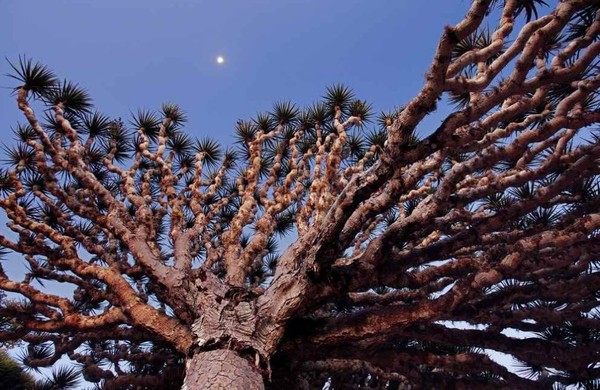
Distribution history
At the end of the 18th century, England had many colonies around the world. The British were interested in finding cheap food for the plantation slaves. When James Cook's expedition brought information about an amazing plant that replaces bread for the aborigines, it was decided to bring it to Europe. The ship "Bounty" was sent to the island of Tahiti under the command of William Bligh. The expedition reached its destination with great difficulty. The team was starving and illnesses began. Upon arrival in Tahiti, the sailors saw a paradise island and wanted to stay on it.
The captain took the breadfruit seedlings from the natives and wanted to go back, but the team rebelled. With great difficulty, he persuaded the sailors to sail back. On the way, difficulties began again due to the lack of drinking water. The seedlings needed abundant watering, which depleted the crew's water supply. As a result, the sailors took control of the ship, landed the captain on an uninhabited island, and threw out the seedlings. However, the captain was able to survive and sailed to England. He equipped a new ship and nevertheless brought the seeds of the plant to Europe.
Description of the breadfruit
Plant characteristic:
- Belongs to the mulberry family, the species is Arktoparus, includes about 60 varieties. Breadfruit, jackfruit, marang, champedak and some other species are very famous food plants in the tropics.
- Plants are cultivated for wood, fruit, or edible seeds. The species differ in the shape of the fruit and the length of growth.
- Bark latex is used to repair pottery.
- All varieties can be divided into wild, its fruits contain seeds, and cultivated, in the fruits of which there are usually no seeds.
- On average, the trunk reaches 20–35 m in height. The tree is somewhat reminiscent of an oak. The bark is gray, smooth.
- The type of tree branches varies: some are thick, with leafy lateral branches; others are long and thin, with little green at the ends.
- The leaves of the plant are also diverse - on one tree there are whole, and pinnately dissected (younger) leaves with varying degrees of pubescence. Depending on climatic conditions, the foliage of the tree is deciduous or evergreen.
Spreading breadfruit
The birthplace of the breadfruit is considered to be New Guinea, from where the Polynesians later spread it to the islands of Oceania. It was brought to Europe by William Demper in the 17th century, after traveling around the world.At the end of the 18th century, they wanted to grow breadfruit in Jamaica in order to provide starving Jamaican slaves with a quick and satisfying food. However, the first seed transport expedition was unsuccessful.
On October 26, 1788, the ship of His Royal Majesty - "Bounty" arrived on the island of Tahiti, thousands of seedlings were loaded on board and the ship sailed to the island of Jamaica. But already on April 28, 1789, a riot occurred on the ship due to a lack of fresh water. As a result, the ship was burned, and the seedlings were thrown into the ocean. However, in 1793 the seeds were already in Jamaica, transported by the ship "Provence". Soon after Jamaica, plantations appeared in the east of India.
At the moment, different species can be found in tropical Asia and the Pacific.
Description of breadfruit
The breadfruit looks like a huge lychee. Grow alone or in clusters on the tops of branches. The fruit itself is huge - the average weight is 4 kg with a diameter of 30 cm.
Use the fruits in the following areas:
- medicine;
- cosmetology;
- Food Industry.
As they ripen, the fruits turn from green to yellow or yellow-brown. Unripe fruits are firm, with starchy, fibrous white flesh. Ripe, on the other hand, are soft, the flesh becomes creamy or yellow, a sweetish taste appears.
Latex is found in all parts of the tree, and it can also be used to judge the degree of ripeness of the fruit. If drops of this juice appear on the peel, then it is ripe. To make it convenient to pick the fruits, when picking, grease your hands with any vegetable oil. Full maturation usually takes 4 to 8 months.
The fruits have a therapeutic effect in a number of diseases. Fiber in them regulates the activity of the gastrointestinal tract, helps with dysbiosis, flatulence, constipation, has an absorbing effect on the body. Breadfruit products are useful for enhancing immunity, normalizing metabolism.
The fruit is considered a ripe fruit and an unripe vegetable. In both cases, it can be eaten without fear.
In the dried state, the pulp can be stored for several years, but the shelf life in its raw form is only about one and a half months. Therefore, a kind of dough is fermented from the pulp. The slices are wrapped in banana leaves, placed in a container and buried in the ground. Under the influence of heat, the fermentation process begins, a doughy mass is formed.
The pulp can be:
- fry;
- cook;
- dry;
- sugar in a jar;
- make gluten-free dough;
- eat it raw.
Contains over 80% starch, 14% sugar, and 1% fat. Due to this amount of starch, the taste of the pulp in any form is similar to that of a potato. The structure is more like a banana. Has a high energy value - 103 kcal per 100 grams of product.
Fruits contain such substances necessary for the body as:
- zinc - 17 mg;
- calcium - 0.54 mg;
- iron - 25 mg;
- magnesium - 30 mg;
- phosphorus - 490 mg;
- potassium - 2 mg;
- sodium - 0.12 mg.
How to make jackfruit can be seen in the video from Irine Vtelaru.
Landing
To grow paulownia, it is necessary to choose areas that are even, well lit and protected from strong winds away from fruit trees. The soil can be slightly alkaline to acidic. Chernozem, sandy loam soils and loose loam are well suited. It is undesirable to plant trees in heavy clayey trees.
For open plantings, one year old seedlings are recommended: they are quite resistant to weather changes. Works are carried out from April to October. Pits are prepared about 1 m deep and 60–70 cm wide. A drainage layer of 20 cm of fine gravel is placed on the bottom. Leaf humus, rotted manure and 40 g of complex mineral fertilizer are added to the removed soil. When planting next to a tree, a high peg is strengthened, to which a fragile trunk is tied. Water the seedlings immediately and abundantly, spending 20 liters of water per 1 copy.
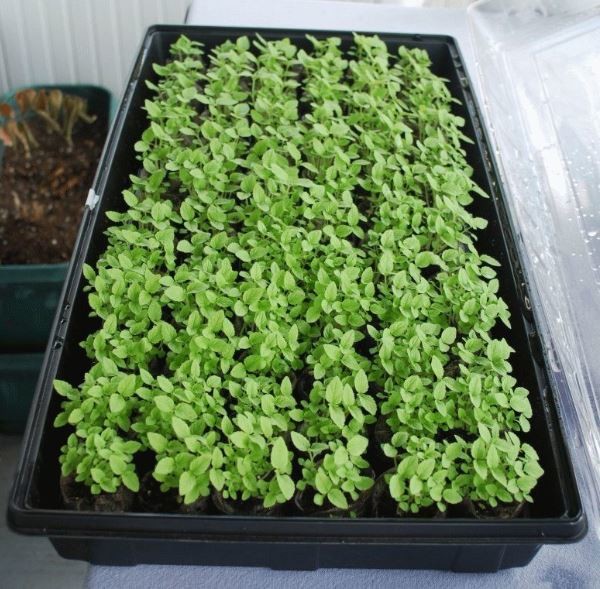
If you want to grow paulownia from seeds, you need to test them for germination by soaking them in water.Floated ones - remove, and sunken ones place on a damp cloth and cover with foil. Every day, the material needs to be watered a little, keep the seedlings at + 22-25 ° C. After 2 weeks, the first shoots will appear. During this period, a napkin with seeds is placed in a container with a nutrient mixture of peat, leaf and sod soil. From above, only dust with earth with a layer of 2-3 mm. Before the appearance of strong shoots, the material is kept in greenhouse conditions, lighting it daily. The grown seedlings are transferred to open ground after a year.
Care
Taking care of the Adam tree is easy. Despite its subtropical origin, it adapts to almost any natural conditions, endures drought, extreme heat, and is unpretentious. The main thing that exotic is necessary: regular hydration and protection from extreme cold.
Watering young shoots should be weekly throughout the growing season, pouring 10 liters of water at the root of one plant at a time. At the age of 3, the root system of trees grows quite deeply, and they no longer need additional moisture. Watering adult specimens is recommended only in prolonged drought. The trunks must be freed from weeds and carefully loosened the soil to a depth of 5–7 cm.

You need to feed seedlings 1-2 times a season, combining mineral compositions and organic fertilizers: humus, compost, bird droppings, mullein. They are introduced in liquid form, combined with watering.
Trees tolerate pruning well, recovering quickly after removing most of the crown. Frozen shoots in winter should be removed immediately with the onset of heat, before the first greenery appears.

